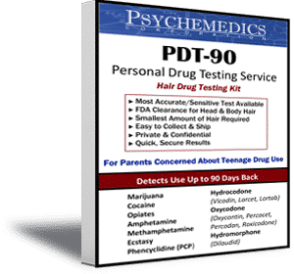WHAT ARE AMPHETAMINES
These Drugs Are Riding A Rising Tide.
What is Amphetamines?
Descriptions
Amphetamine — A psychostimulant drug that is known to produce increased wakefulness and focus in association with decreased fatigue and appetite.
Methamphetamine — An addictive stimulant that strongly activates certain systems in the brain.
MDMA or Ecstasy (3-4-methylenedioxymethampheta-mine), is a synthetic drug with amphetamine-like and hallucinogenic properties.
Analyte
Amphetamine, Methamphetamine, MDMA (Ecstasy), MDA, MDEA (Eve)
Street Names / Slang Terms
Amphetamine — Speed, Uppers, Pep Pills, Bennies, Black Beauties
Methamphetamine — Speed, Chalk, Crank, Croak, Crypto, Crystal, Fire, Glass, Meth, Tweek, White Cross
Ecstasy — Ecstasy, Eve, E, X, XTC, Adam, Essence, Roll, Love Drug
Contact Psychemedics Today
What Do Amphetamines Look Like?
Amphetamine — Illicit amphetamine appears as crystals, chunks, and fine to coarse powders, off-white to yellow in color, and supplied loose (in plastic or foil bags) or in capsules or tablets of various sizes and colors.
Methamphetamine — A crystal-like powdered substance that sometimes comes in large rock-like chunks. When the powder flakes off the rock, the shards look like glass. Meth is white or slightly yellow, depending on the purity.
Ecstasy comes in a tablet form that is often branded, e.g. Playboy bunnies, Nike swoosh, CK.
How Are Amphetamines Used?
The drug may be sniffed, smoked, injected, or taken orally in tablet or capsule form.
Taken in pill form, users sometimes take Ecstasy at "raves", clubs, and other parties for mood or energy enhancement.
Fast Facts About Amphetamines
Why choose Psychemedics for Methamphetamines Drug Testing?
Unrivaled Detection plus Unmatched Deterrence for starters.
Psychemedics enjoys a long legacy of firsts in testing for Amphetamines using hair analysis. In 2000 we developed and delivered the first hair test for MDMA (Ecstasy) and followed that in 2002 with FDA-cleared assays for MDMA and Methamphetamine. As with all Psychemedics drug screens, our Amphetamines assays are FDA 510k-cleared.
Continuing to innovate, we achieved another innovation milestone in 2012 when our Methamphetamine immunoassays were validated as equivalent to radioimmunoassays and awarded FDA clearance. And most recently in 2015 the company received FDA clearance for the Adderall assay further extending the broadest FDA-cleared hair testing portfolio for Amphetamines in the industry. Psychemedics’ hair tests for Amphetamines are part of our 5-panel drug test and Adderall is offered as an add-on.
Our non-invasive testing procedure uses a sample of hair that is up to 60% less than that required by any hair testing lab which is easily collected and shipped to our College of American Pathologists (CAP) and ISO-IEC 17025:2005 certified laboratory. Turnaround on most results is the best in the industry.
Psychemedics has detected more drug users for more companies than any hair testing lab in the world and our results have been accepted by courts across the country. Contributing to our unmatched legal track record, it is the only hair test with safeguards validated by the FBI to protect those tested from false positive results by differentiating between ingestion versus external exposure to a drug. Our clients confidently make policy decisions knowing that we go the extra mile to ensure fairness to those tested.
More Information About Amphetamines
Short Term Effects
Amphetamines, like adrenaline, affect not only the brain but also the heart, lungs, and many other organs. At low doses, such as those prescribed medically, physical effects include loss of appetite, rapid breathing and heartbeat, high blood pressure, and dilated pupils. Larger doses may produce fever, sweating, headache, blurred vision, and dizziness. And very high doses may cause flushing, pallor, very rapid or irregular heartbeat, tremors, loss of coordination, and collapse.
Methamphetamine — Immediately after smoking or injection, the user experiences an intense sensation, called a “rush” or “flash”, that lasts only a few minutes and is described as extremely pleasurable. After the initial “rush”, there is typically a state of high agitation that in some individuals can lead to violent behavior. Other possible immediate effects include increased wakefulness and insomnia, decreased appetite, irritability / aggression, anxiety, nervousness, convulsions, and heart attack.
Ecstasy — Users report that Ecstasy produces intensely pleasurable effects including an enhanced sense of self-confidence and energy. Effects include feelings of peacefulness, acceptance and empathy. Users say they experience feelings of closeness with others and a desire to touch others. Other effects can include involuntary teeth clenching, a loss of inhibitions, transfixion on sights and sounds, nausea, blurred vision, chills, and / or sweating. Increases in heart rate and blood pressure, as well as seizures, are also possible. The stimulant effects of the drug enable users to dance for extended periods, which when combined with the hot crowded conditions usually found at raves, can lead to severe dehydration and hyperthermia or dramatic increases in body temperature. This can lead to muscle breakdown and kidney, liver, and cardiovascular failure. Cardiovascular failure has been reported in some of the Ecstasy-related fatalities. After-effects can include sleep problems, anxiety and depression.
Long Term Effects
Because amphetamines specifically suppress appetite, chronic heavy users generally fail to eat properly and thus develop various illnesses related to vitamin deficiencies and malnutrition. Users may also be more prone to illness because they are generally run down, lack sleep, and live in an unhealthy environment. Chronic heavy users may also develop a mental disturbance very similar to paranoid schizophrenia. Methamphetamine is addictive, and users can develop a tolerance quickly, needing larger amounts to get high. Chronic use can cause paranoia, hallucinations, repetitive behavior (such as compulsively cleaning, grooming or disassembling and assembling objects), and delusions of parasites or insects crawling under the skin. Users can obsessively scratch their skin to get rid of these imagined insects. Long-term use, high dosages, or both can bring on full-blown toxic psychosis (often exhibited as violent, aggressive behavior). This violent, aggressive behavior is usually coupled with extreme paranoia. Methamphetamine use can also cause strokes and death.
Repeated use of Ecstasy ultimately may damage the cells that produce serotonin, which has an important role in the regulation of mood, appetite, pain, learning and memory. It produces nerve cell damage and can result in psychiatric disturbances and long term cognitive impairments.
Stay Current On Amphetamine Drugs Of Abuse
We have put together an information sheet on Amphetamines to help you understand the threats and recognize the symptoms of abuse. You can download the document for your reference or to share with others who may benefit from the information we have shared.


Buy Our PDT-90 AT Home Drug Testing Kit Today
Parents can administer the test in the privacy of their own homes. Just collect a small sample of a child’s hair, send the sample to the Psychemedics laboratory and receive notification of the results within 3-5 business days of receipt of the sample at the laboratory. The ‘PDT-90’ includes all instructions plus a pre-paid mailing envelope for the sample. No names are used so complete confidentiality is assured.
$89.95 - Plus Free Shipping
Drug News You Can Use
Sign up for our quarterly newsletter to stay up-to-date with snapshots of usage statistics, information on the latest trends, and updates on detection science.
